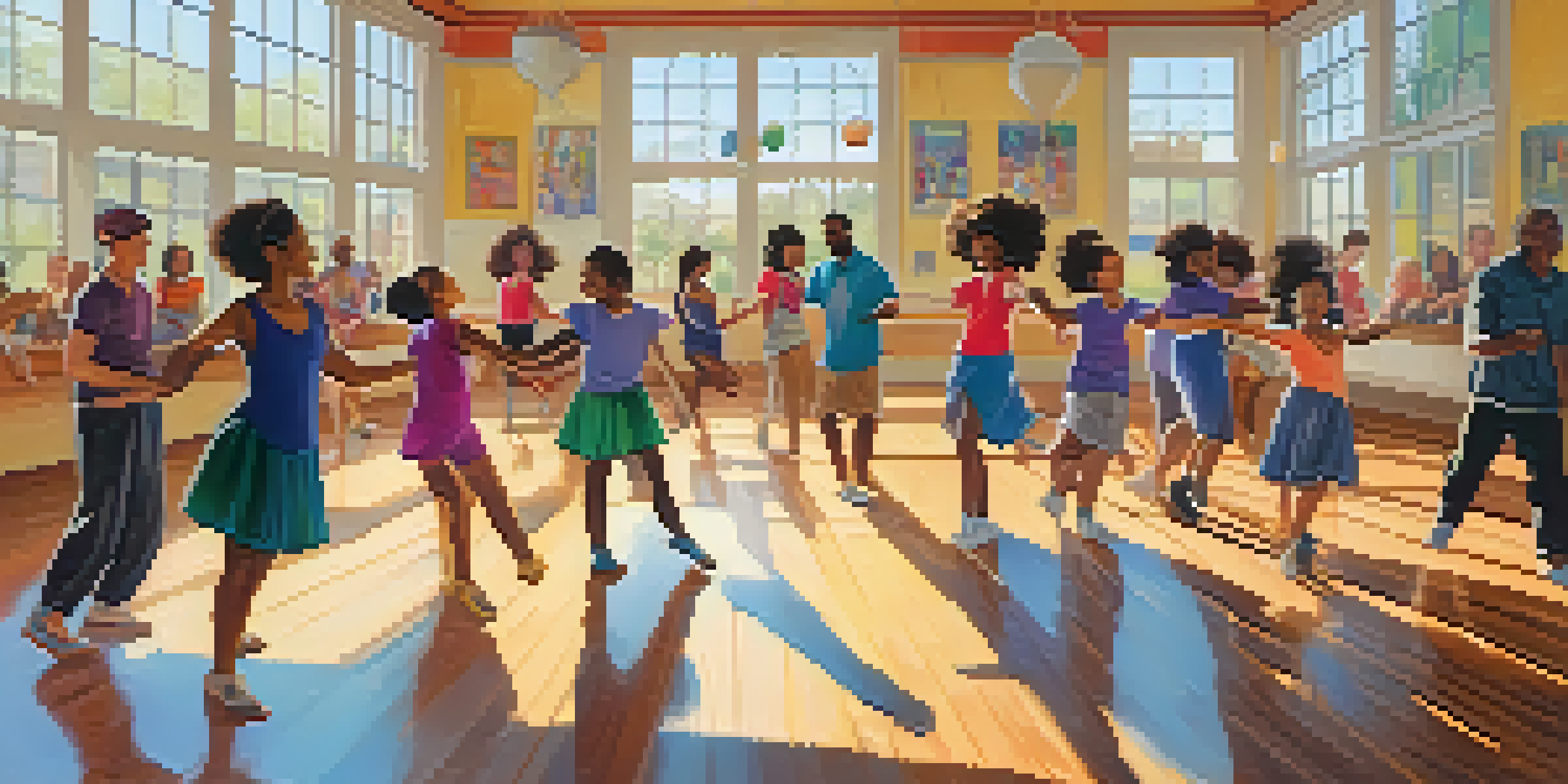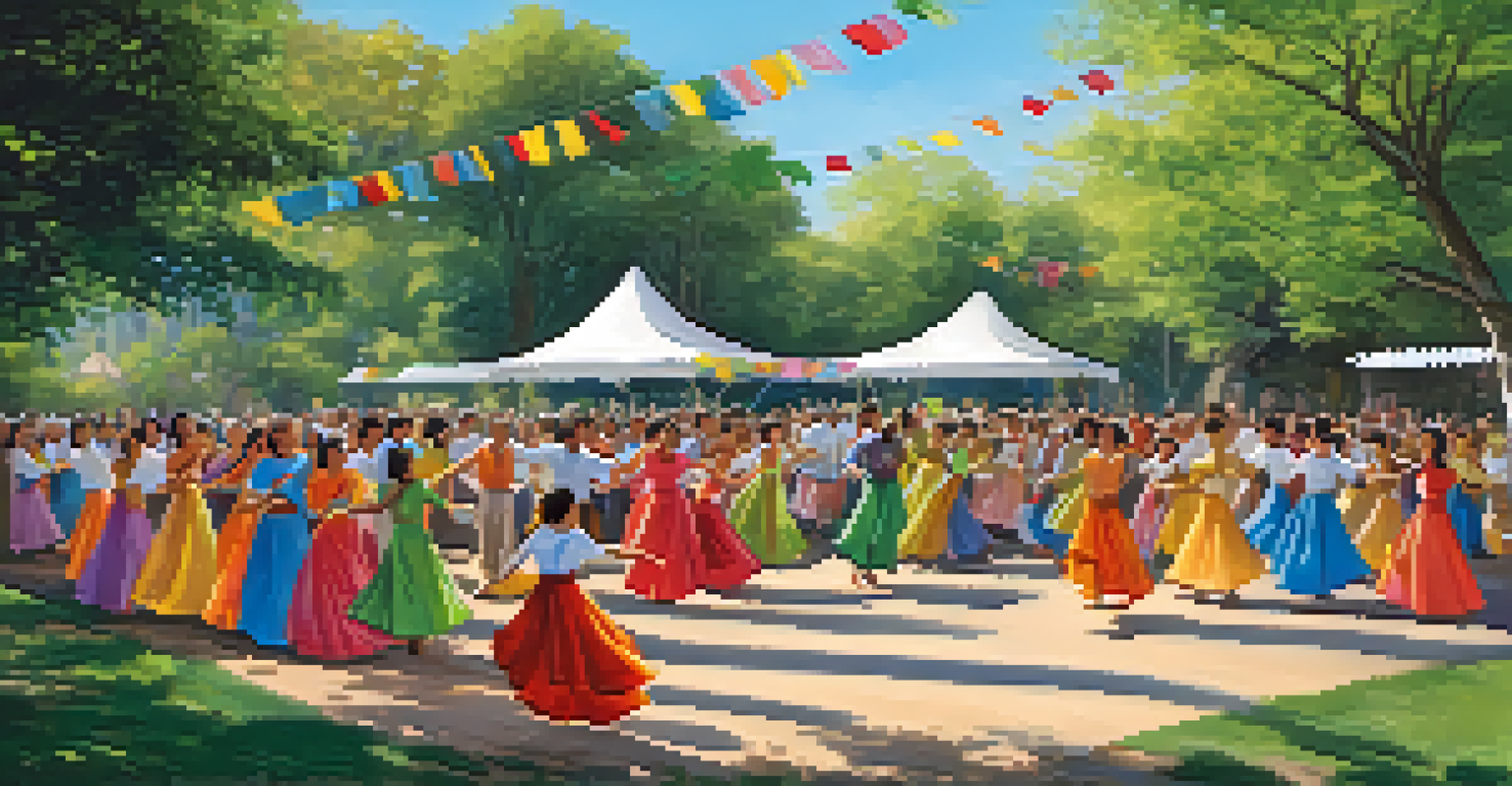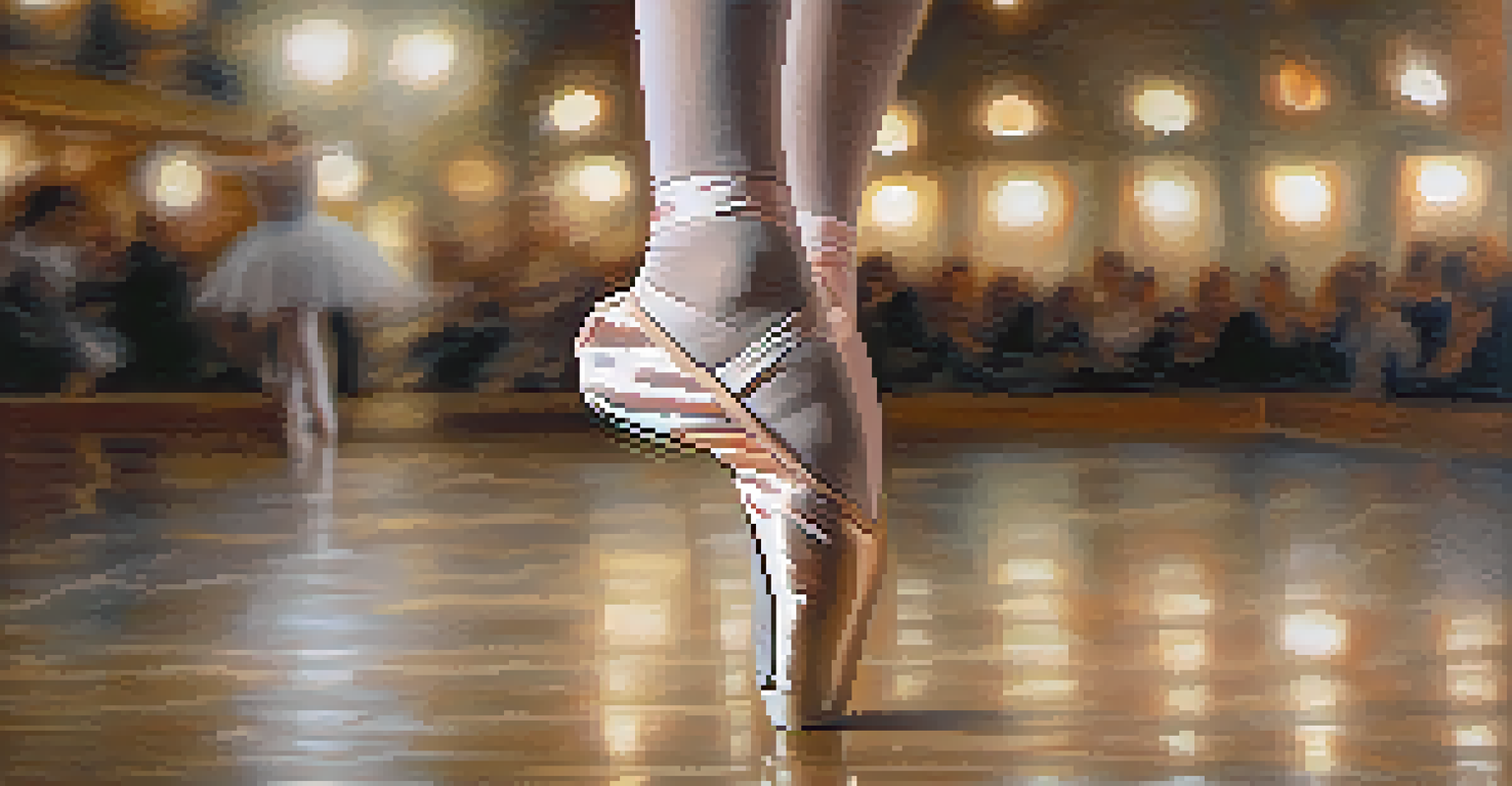Dance Education Programs: Building Healthier Communities Globally

The Global Impact of Dance Education Programs
Dance education programs have a far-reaching impact that transcends cultural boundaries. These programs not only teach dance but also instill values such as discipline and teamwork. By engaging individuals from diverse backgrounds, dance becomes a universal language that promotes understanding and connection.
Dance is the hidden language of the soul.
In communities around the world, dance education acts as a bridge, connecting people through shared artistic expression. This connection fosters a sense of belonging and community pride, which is essential for developing healthy social environments. As participants learn to express themselves through movement, they also learn to appreciate the differences and similarities that unite them.
Furthermore, these programs can significantly contribute to local economies by creating jobs and attracting tourism. Dance showcases the vibrant culture of a community, inviting visitors to experience its unique heritage. In this way, dance education supports not just personal growth, but also the economic vitality of communities.
Benefits of Dance for Physical Health
Engaging in dance is a fun way to improve physical health, making it an ideal activity for all ages. Regular dance practice promotes cardiovascular fitness, flexibility, and strength. Whether it's ballet, hip-hop, or traditional folk dance, each style offers unique health benefits that contribute to overall well-being.

Moreover, dance can serve as a powerful tool for combating sedentary lifestyles. With the rise of technology, many people find themselves spending hours in front of screens, leading to health issues like obesity and heart disease. Dance education encourages movement, helping participants to become more active while enjoying the process.
Dance Fosters Community Connection
Dance education programs bridge cultural gaps, promoting understanding and community pride through shared artistic expression.
Additionally, studies have shown that dance can improve mental health by reducing stress and anxiety. The physical exertion involved in dancing releases endorphins, the body's natural mood lifters. Therefore, dance education not only nurtures the body but also supports mental wellness, creating healthier individuals and communities.
Fostering Creativity and Expression through Dance
Dance education encourages creativity and self-expression, essential components of emotional and social development. By allowing individuals to express their thoughts and feelings through movement, dance cultivates confidence and self-esteem. This creative outlet can be particularly beneficial for those who may struggle with traditional forms of communication.
The dance is a poem of which each movement is a word.
In dance classes, participants learn to interpret music and express emotions, often leading to personal breakthroughs. For many, this process of creation can be incredibly liberating, providing a safe space to explore identity and cultural narratives. When people feel empowered to express themselves, they contribute positively to their communities.
Moreover, creativity fostered through dance can spill over into other areas of life. Participants often find that the skills they acquire in dance—such as problem-solving and teamwork—enhance their academic and professional endeavors. This holistic development is invaluable in building well-rounded individuals who contribute to healthier societies.
Dance Education as a Tool for Social Inclusion
One of the most powerful aspects of dance education is its ability to promote social inclusion. Programs that welcome individuals from diverse backgrounds help break down barriers and foster understanding. Dance becomes a shared experience, allowing people to connect regardless of their differences.
Through inclusive dance programs, marginalized communities find a platform for their voices and stories. This representation is crucial, as it empowers individuals to share their cultures and experiences through art. When people see themselves reflected in dance, it enhances their sense of belonging and value within the community.
Health Benefits of Dance
Engaging in dance enhances physical fitness and mental wellness, making it a fun and effective way to combat sedentary lifestyles.
Additionally, inclusive dance education can combat social issues such as bullying and discrimination. By bringing diverse groups together, these programs teach respect, empathy, and collaboration. Ultimately, dance education can transform communities into more inclusive and supportive environments, fostering healthier social dynamics.
Building Resilience through Dance Education
Dance education teaches resilience, an essential skill for navigating life's challenges. The process of learning dance involves perseverance, as students must practice repeatedly to master new techniques. This journey of overcoming obstacles equips individuals with the mental fortitude to tackle problems beyond the dance studio.
Moreover, participating in dance can help individuals cope with adversity. Many dancers report that the discipline and focus required in dance provide them with tools to manage stress in other areas of life. This resilience not only benefits the individual but also strengthens the community as a whole.
As dancers learn to embrace failure as a part of growth, they develop a mindset that values persistence. This attitude can inspire others within their community, creating a ripple effect of resilience. By fostering a culture that celebrates effort and improvement, dance education supports healthier, more resilient communities.
The Role of Technology in Dance Education
In today's digital age, technology plays a pivotal role in enhancing dance education programs. Online platforms allow for greater accessibility, enabling individuals from various backgrounds to participate in dance classes. This flexibility has been especially important during times of crisis, such as the global pandemic, when in-person gatherings were restricted.
Through virtual classes and workshops, dance educators can reach wider audiences, sharing their expertise and passion for dance. Social media also serves as a powerful tool for promoting dance education, showcasing talent and inspiration from around the globe. This exposure can motivate individuals to explore their own dance journeys.
Dance Promotes Social Inclusion
Inclusive dance education empowers marginalized voices, fostering empathy and collaboration while breaking down social barriers.
However, while technology offers many benefits, it is essential to maintain a balance. Face-to-face interaction and community building are vital components of dance education that technology cannot fully replicate. The challenge lies in blending these elements to create enriching and inclusive dance experiences for all.
Future Directions for Dance Education Programs
As we look to the future, dance education programs are poised to evolve and adapt to the changing needs of communities. There is a growing recognition of the importance of integrating wellness and mental health into dance curricula. This holistic approach will ensure that dance education continues to support not only physical fitness but also emotional well-being.
Additionally, collaboration between dance educators and community organizations can enhance the impact of these programs. By working together, they can create tailored initiatives that address specific local needs, from youth engagement to senior wellness. These partnerships can amplify the reach and effectiveness of dance education.

Finally, embracing diversity in dance styles and cultural expressions is essential for the continued growth of dance education. By honoring various forms of dance, programs can foster a richer understanding of global cultures and histories. This inclusivity will not only create healthier communities but will also celebrate the beautiful tapestry of human expression through dance.